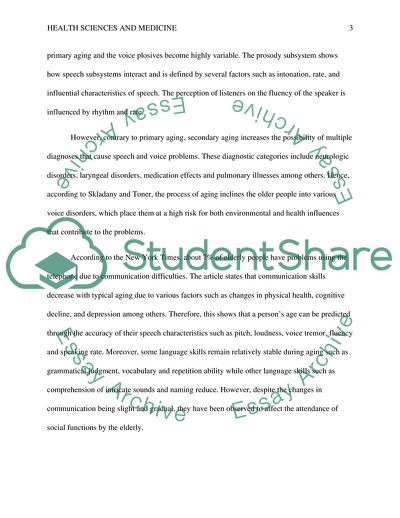Aging speech: voice, resonance, and articulation Essay. https://studentshare.org/medical-science/1770453-aging-speech-voice-resonance-and-articulation
Aging Speech: Voice, Resonance, and Articulation Essay. https://studentshare.org/medical-science/1770453-aging-speech-voice-resonance-and-articulation.


